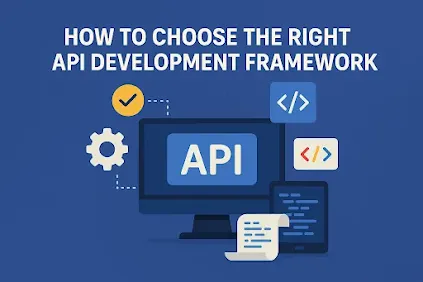How to Choose the Right API Development Framework
Selecting the appropriate API development framework is a pivotal decision that can significantly influence the efficiency, scalability, and maintainability of your application. With a myriad of frameworks available, each offering unique features and capabilities, it's essential to evaluate your project's specific needs to make an informed choice.
1. Understand Your Project Requirements
Begin by assessing the specific needs of your project. Consider factors such as the complexity of the application, expected traffic volume, required response times, and integration with other systems. A lightweight framework might suffice for a simple application, while a more robust framework may be necessary for complex, high-traffic applications.
2. Evaluate Language Compatibility
The programming language you're comfortable with or the one that best fits your project's requirements plays a crucial role in framework selection. For instance, if you're working with JavaScript, frameworks like Express.js or Fastify might be appropriate. For Python developers, Django or Flask are popular choices, while Java developers might lean towards Spring Boot.
3. Consider Performance and Scalability
Performance is a critical aspect of API development. Evaluate the framework's ability to handle high loads and its support for asynchronous processing. Frameworks like FastAPI are known for their high performance and scalability, making them suitable for applications requiring rapid response times and the ability to handle a large number of simultaneous requests.
4. Assess Security Features
Security should be a top priority when selecting a framework. Ensure that the framework provides built-in security features such as data encryption, authentication mechanisms, and protection against common vulnerabilities. Frameworks like Django come with robust security features out of the box, reducing the need for additional security measures.
5. Evaluate Community Support and Documentation
A strong community and comprehensive documentation can significantly ease the development process. Frameworks with active communities are more likely to have readily available solutions to common problems and regular updates. Ensure that the framework you choose has extensive documentation and an active community to support your development efforts.
6. Consider Long-Term Maintenance and Support
Think about the long-term implications of your framework choice. Consider factors like ease of maintenance, availability of developers skilled in the framework, and the framework's maturity. Choosing a well-established framework can ensure long-term support and ease of finding skilled developers.
7. Prototype and Test
Before making a final decision, consider building a small prototype using the shortlisted frameworks. This hands-on approach allows you to assess the framework's suitability for your project's specific needs and identify any potential challenges early in the development process.
Conclusion
In conclusion, selecting the right API development framework involves a thorough evaluation of your project's requirements, the framework's capabilities, and long-term considerations. By carefully assessing these factors, you can choose a framework that aligns with your project's goals and ensures a smooth development process.




Comments
Post a Comment